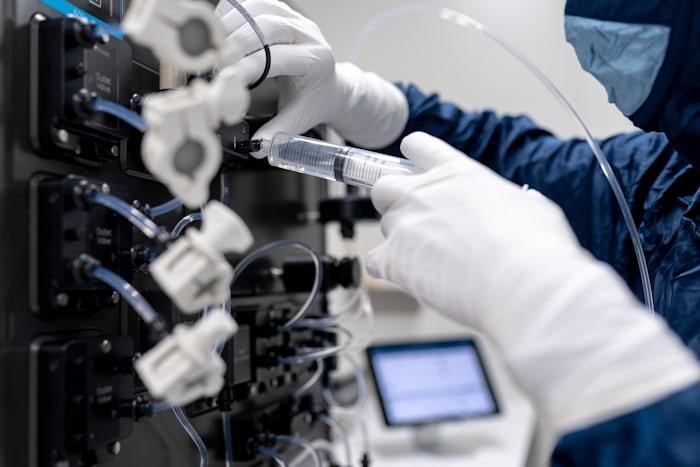Biotechnology
has evolved from artisanal lab practices to highly integrated platforms that
shape both scientific outcomes and cultural norms within biomedicine. By moving
“from labs to life,” modern biotech infrastructure empowers researchers to
accelerate discovery, improve reproducibility, and democratize access to
advanced tools.
Two complementary trends illustrate this shift: fully
automated, end-to-end platforms for tasks such as cell line development, and
platform-based design philosophies that emphasize modularity and
interoperability across diverse applications.

Crossover Technologies and Biodesign Ecosystems
As different platforms interconnect, “crossover” effects
emerge. Cell
line development platforms high-throughput screening instruments, and
biomanufacturing bioreactors now share standardized interfaces that support continuous
data flow. This convergence fosters “biodesign ecosystems”—networked
communities where academic labs, biotech startups, and large-scale
manufacturers collaborate within shared infrastructure. Community-based
biodesign spaces, for example, provide informal learning environments where
students, engineers, and entrepreneurs can prototype devices, share protocols,
and exchange insights across cultural and disciplinary boundaries. These spaces
amplify diversity of thought, accelerating innovation and broadening the scope
of bioengineering solutions.
Such cross-pollination also influences workforce
development. As platforms become more user-friendly and software-driven, the
demand grows for “hybrid” professionals—individuals skilled in both wet-lab
biology and computational methods. Universities increasingly offer
interdisciplinary curricula combining molecular biology, automation
engineering, and data science. The result is a new culture of “bioconvergence,”
where boundaries between biology, engineering, and informatics blur.
Automation in Cell Line Development
Traditionally, generating a stable cell line for antibody
production or viral-vector manufacturing involved labor-intensive manual
workflows: transfecting cells, isolating single clones, expanding populations,
and screening for high producers. Each step required specialized expertise and
lengthy timelines. New cell line development tech embodies a new paradigm by
fully automating the entire stable cell line development (CLD) process within a
single workstation. The C.STATION integrates high-precision single-cell
dispensing, imaging, advanced cell culture, and software-driven clone
annotation to ensure traceability and regulatory readiness. Researchers can
process up to 32 × 384-well plates in parallel, perform early titer assessments
with integrated assays, and track clone lineage via intuitive software,
reducing hands-on time, increasing throughput, and minimizing user error.
The implications extend beyond mere efficiency. By lowering
technical barriers and standardizing protocols, platforms like C.STATION foster
broader participation in biotherapeutic research. Smaller academic labs and
start-ups—historically deterred by the cost and complexity of manual CLD—can
now compete with large pharmaceutical companies. This democratization promotes
a culture of open innovation: data sharing, collaborative project designs, and
rapid iteration cycles that accelerate translational research from bench to
bedside.
Cultural Impact of Integrated Infrastructure
Platform-based automation reshapes lab culture in several
ways. First, it shifts the researcher’s role toward experimental design and
data interpretation rather than routine bench work. For example, a scientist
can focus on vector design or assay development while the platform executes
repetitive steps. Second, unified data management systems embedded within
platforms enhance transparency. Researchers can review timestamped imaging data
and performance metrics for each clone, facilitating cross-lab reproducibility
and regulatory compliance, a critical factor in therapeutic development.
Moreover, integrating multiple functions—cell dispensing,
imaging, liquid handling, and analytics—encourages cross-disciplinary
collaboration. Engineers, software developers, and biologists must coordinate
to optimize workflows, leading to a convergence culture where diverse expertise
coalesces around common goals. This contrasts with the siloed environments of
past decades, where individual labs maintained proprietary methods and limited
data exchange.

Platform-Based Design in Biomedicine
Beyond hardware automation, a second trend—platform-based
design—has taken root. Platform-based approaches prioritize modularity,
interoperability, and shared standards across disparate technologies. A recent
PNAS analysis highlights how platform-based strategies create value in drug
development by streamlining resource-intensive phases and enabling unified
access to modular data chunks PNAS.
By adopting microservices architecture, biomedical cloud platforms can deliver
specialized functions—data storage, computational workflows, analytics—as
independent, reusable services. This echoes principles from software
development, where open APIs and containerization allow rapid composition of
complex pipelines.
In practice, platform-based design manifests as cloud-native
bioinformatics portals, standardized sample-processing pipelines, and modular
hardware components. For instance, next-generation sequencing (NGS) workflows
leverage cloud-based microservices for quality control, alignment, and variant
calling. Laboratories can assemble bespoke pipelines from existing modules,
reducing development time and ensuring that best-practice algorithms propagate
throughout the community. Similarly, automated CLD platforms like C.STATION can
integrate with cloud databases, allowing downstream analytics—such as machine
learning–driven clone selection—to plug into existing data streams seamlessly.
Challenges and Future Directions
Despite transformative potential, adopting platform-based
design poses challenges. Standardization efforts require consensus on data
formats, APIs, and validation protocols. Proprietary platforms may hesitate to
expose internal APIs, limiting interoperability. Additionally, smaller
institutions may struggle to invest in capital-intensive automated workstations
without shared funding models or consortiums. Data security and privacy
concerns also arise when critical biological data traverse cloud-based
microservices.
To mitigate these issues, collaborative consortia—comprising
academic labs, industry partners, and regulatory agencies—are forming to define
common standards. Open-source initiatives encourage transparent sharing of
software modules and hardware specifications. For example, biofoundries employ
standardized measurement techniques and publicly share assay data, facilitating
adaptation across multiple platforms. Funding agencies are likewise promoting
public-private partnerships to subsidize infrastructure costs and ensure
equitable access.
Conclusion
The transition “from labs to life” is driven by two
intertwined forces: sophisticated automation platforms that optimize core
workflows. Together, these trends reconfigure both the cultural landscape and
the technological underpinnings of biomedicine. As platforms proliferate, they
democratize access, enable cross-disciplinary collaboration, and accelerate
translational research.
Researchers increasingly shift from manual bench tasks to
strategic oversight and data-driven decision-making. Moving forward, fostering
open standards, shared infrastructures, and inclusive biodesign ecosystems will
be essential to maximize the cultural and societal benefits of these emerging
biotech platforms.


